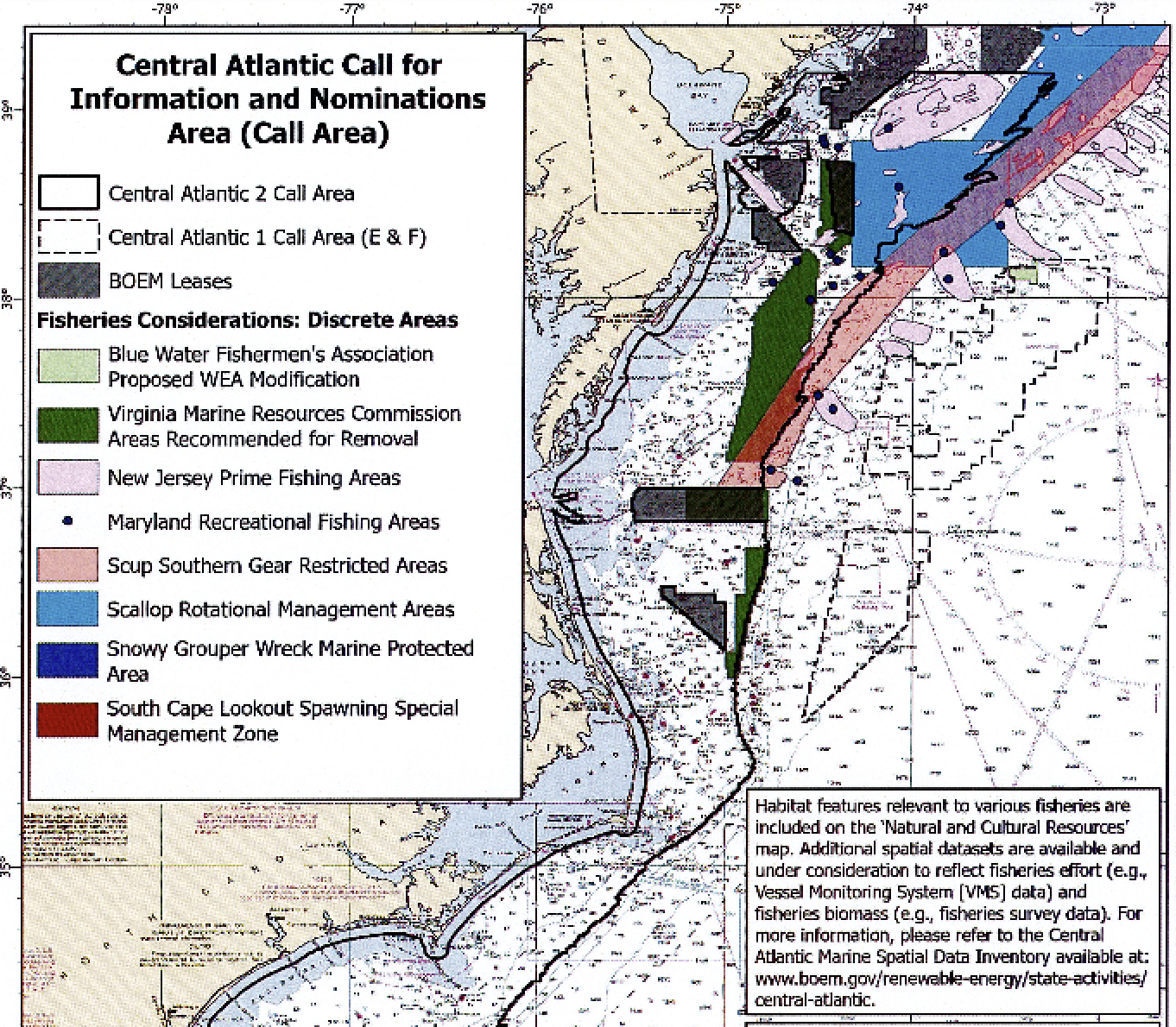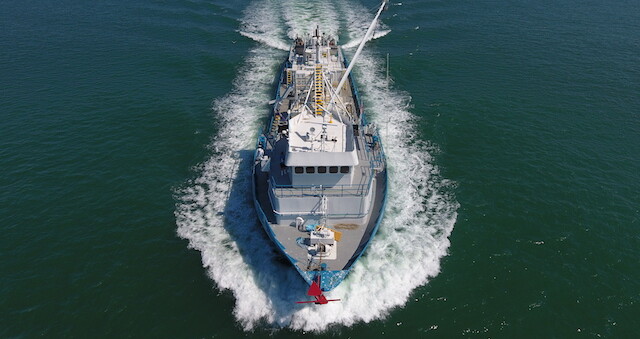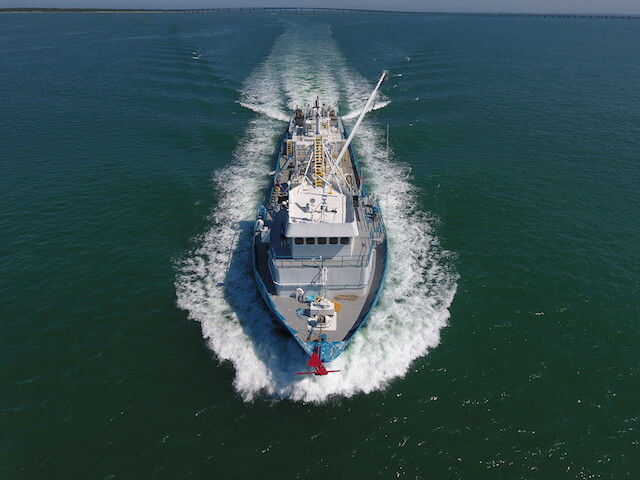A recent proposal to outline new wind energy areas off the Mid-Atlantic coast could threaten some of the most important East Coast sea scallop fishing grounds, New Bedford, Mass. officials warned the federal Bureau of Ocean Energy Management (BOEM).
“As the port where the fishing and offshore wind industry intersect more than anywhere else, New Bedford is committed to the successful coexistence of both industries,” New Bedford Mayor Jon Mitchell said in an Oct. 23 statement with the New Bedford Port Authority. “We believe that the new Mid-Atlantic call areas must be cut back from existing scallop and other fishery access areas, which still would leave ample room for nearby states to achieve their offshore wind capacity goals.”

A day later Virginia-based menhaden fishermen also called for BOEM to alter its plans and provide significant setbacks from wind power development areas and fishing grounds.
Ocean Harvesters, which operates nine menhaden purse seine vessels based in Reedville, Va., and Omega Protein processors have called for a 15-mile buffer from offshore wind development, beyond the 6 miles offshore now proposed.
“Maintaining an appropriate buffer zone is particularly crucial off the coast of Virginia because waters around the Chesapeake Bay are where conflicts with the menhaden fishery would be most acute,” according to the menhaden companies. “Additionally, the confluence of shipping lanes, military operations, and recreational traffic makes this a congested area in the ocean, of importance to numerous existing ocean users.
BOEM recently proposed the “Central Atlantic 2 Call Area,” a first step for the agency to gauge interest from wind energy developers – and hear from fishermen, shipping companies and other maritime operators who would be affected if wind turbine arrays are built in those waters.

The New Bedford Port Authority submitted a formal response to BOEM, “raising significant concerns about its potential impact on the commercial fishing industry,” the authority said in a statement. The city on Massachusetts’s south coast is the nation’s oldest fishing port – and now a key base for building wind turbine arrays off southern New England.
“As the nation's most profitable fishing port and home to the first large-scale offshore wind marshaling port, New Bedford is deeply invested in both renewable energy development and the preservation of vital fishing grounds,” according to the New Bedford Port Authority.
Scallops are per-pound the most valuable U.S. fishery and the proposed call area encompasses some of the most productive grounds in the Mid-Atlantic, names well known to fishermen by their outlines on offshore charts: the Elephant Trunk, Hudson Canyon and Delmarva.
The National Marine Fisheries Service has estimated that over 16 recent years “the catch value for the most impacted commercial fisheries in the area of the proposed call is just under $2 billion, with just under $1.5 billion of that amount coming from sea scallops,” the New Bedford Port Authority said.
"Our grave concern about this…call area is that it unnecessarily includes some of the most critically important scallop fishing areas on the East Coast," Gordon Carr the port authority executive director, wrote in the agency’s comment letter to BOEM. "What is stunning to us is that all that data is and was available to BOEM prior to setting the boundaries of the proposed call area."
Carr wrote that shifting the call area boundary 150 miles south can avoid those scallop fishing areas “while still leaving more than 400 miles and millions of acres of call area down to the South Carolina state line."
"It is long past time for BOEM to take seriously its responsibility towards the other users of the Outer Continental Shelf ("OCS"), some of which, like commercial fishing, have been using the same areas for hundreds of years. BOEM must begin to demonstrate a concerted effort to avoid and minimize the potential impact of a call area, collective lease areas, WEA, and each turbine,” Carr wrote
Menhaden fishermen say future wind turbine projects close to shore will deny them access to fishing grounds.
“These operations rely on aerial spotter planes and a complex netting process to harvest menhaden, a method that is incompatible with wind turbine arrays,” according to Ocean Harvesters and Omega Protein. “The range of the nets, the need for spotter planes to fly at low altitudes, and the drift of vessels during harvesting make it essential that a buffer zone be established around wind energy sites.”







